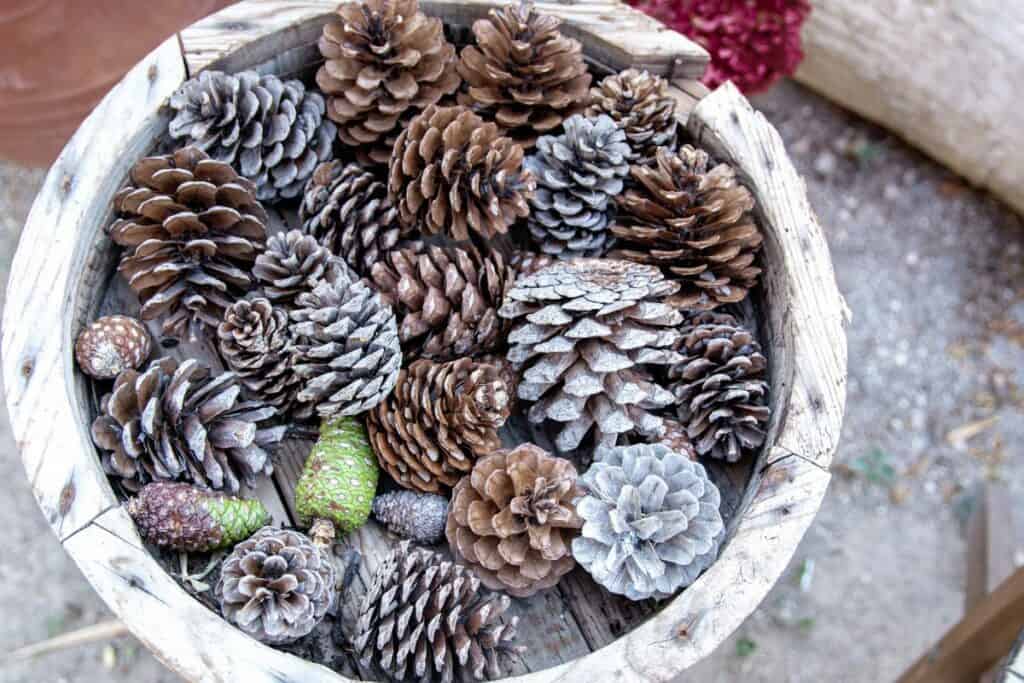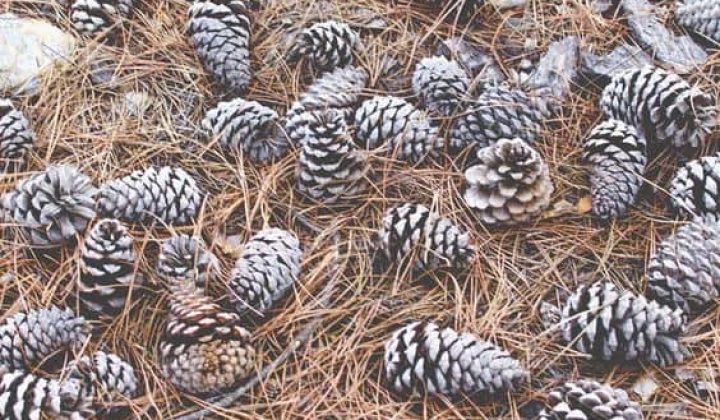Got pinecones?
They’re more useful than you think!
Find out why adding pinecones to the bottom of your planters can benefit your plants.
Curious to know more?
Let’s dive in!
Advantages of Utilizing Pinecones in Gardening

Pinecones are an excellent addition to your garden containers for several reasons:
- Lighter Containers: Replacing a portion of the soil with pinecones can significantly lighten the weight of your planters.
- Optimal Moisture Control: With fewer pinecones in place of soil, your plants will experience better moisture management, avoiding over-saturation.
- Eco-Friendly Option: Unlike synthetic materials that might release harmful substances, pinecones are a safe, chemical-free alternative.
- Cost-Effective: Collect pinecones from nature or purchase them affordably to reduce the amount of soil needed, saving money.
- Improved Drainage and Aeration: Pinecones contribute to forming air gaps, which promote superior drainage and root vitality.
- Nutrient-Rich Decomposition: As pinecones decompose, they enrich the soil with nutrients and can increase the acidity level, benefitting acidophilic flora.
Remember to source your pinecones from your own garden or natural surroundings, ensuring they’re free of charge. This sustainable practice not only embellishes your garden aesthetically but serves tangible horticultural benefits.
Selecting the Ideal Pinecones for Planters

When choosing pinecones for planter bases, larger specimens with wider gaps between the scales are superior, as they allow for better airflow. Favor those found already shed on the forest floor, as they tend to be drier and lighter, making them preferable for your purpose.
- Opt for Size: Seek out big pinecones with adequate space between the bracts for air circulation.
- Fallen Cones: Pick pinecones that have naturally dropped to the ground.
- Dry and Light: These cones are usually lighter and ideal for use in planters.
- Speedier Breakdown: Ground-fallen pinecones degrade faster, integrating seamlessly into the soil.
- Additional Pine Needles: If available, mix in some pine needles to improve drainage, but ensure they are disease-free to protect your plants.
Incorporating Pinecones into Your Planters

When adding pinecones to your planters, begin by placing them at the planter’s base, ensuring ample space for plant root expansion and soil stabilization. Aim to fill roughly one-third of your container with pinecones, adjusting the amount based on the space requirements of your chosen plants.
Steps for Adding Pinecones:
- Lay out pinecones at the base of the planter.
- Cover with your choice of growing medium, ensuring it fills the voids between the cones.
- The pinecones will gradually decompose, enhancing soil aeration.
Watch for changes in the soil level as pinecones decompose, and top up with soil as necessary to maintain the desired volume and support plant growth.
Tips for Different Planter Sizes:
- For large containers: Use a generous amount of pinecones.
- For smaller planters: Opt for tinier pinecones to better fit the scale.
Additional Uses:
- Pinecone mulch: Grind pinecones for an effective garden mulch.
- Pest deterrent: Scatter small pinecones on the surface to keep pets from disturbing your plants.
